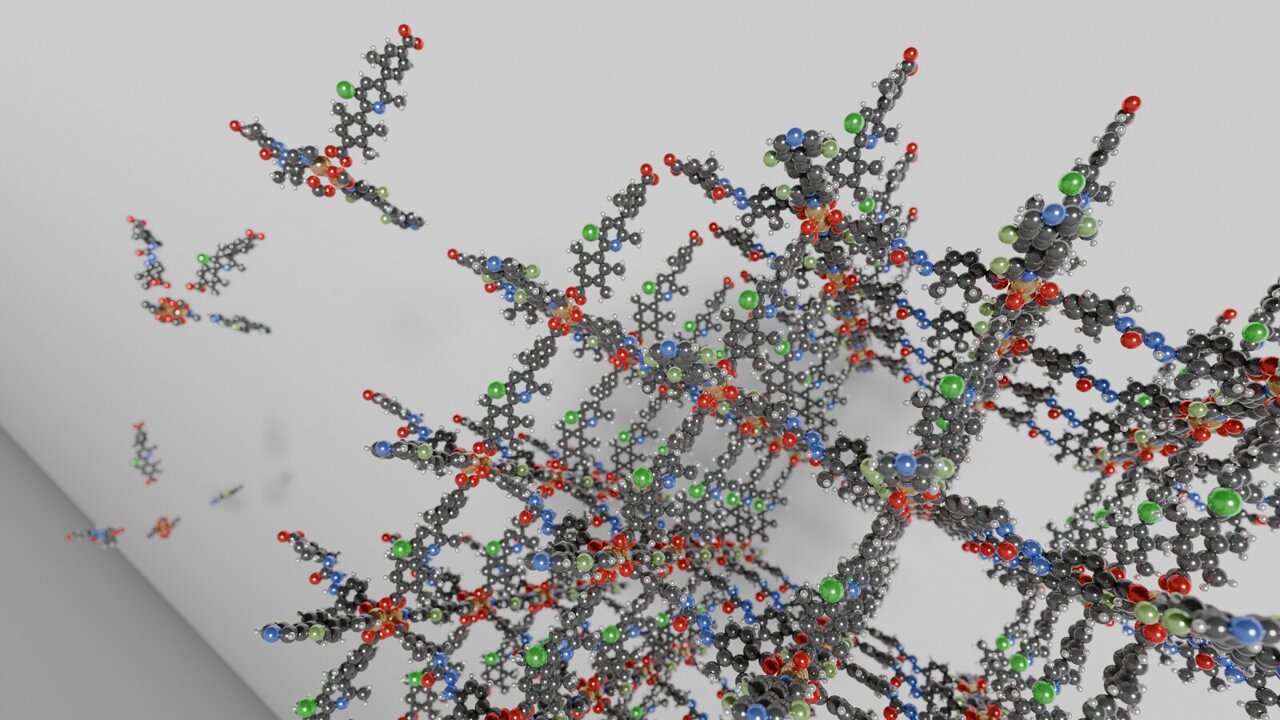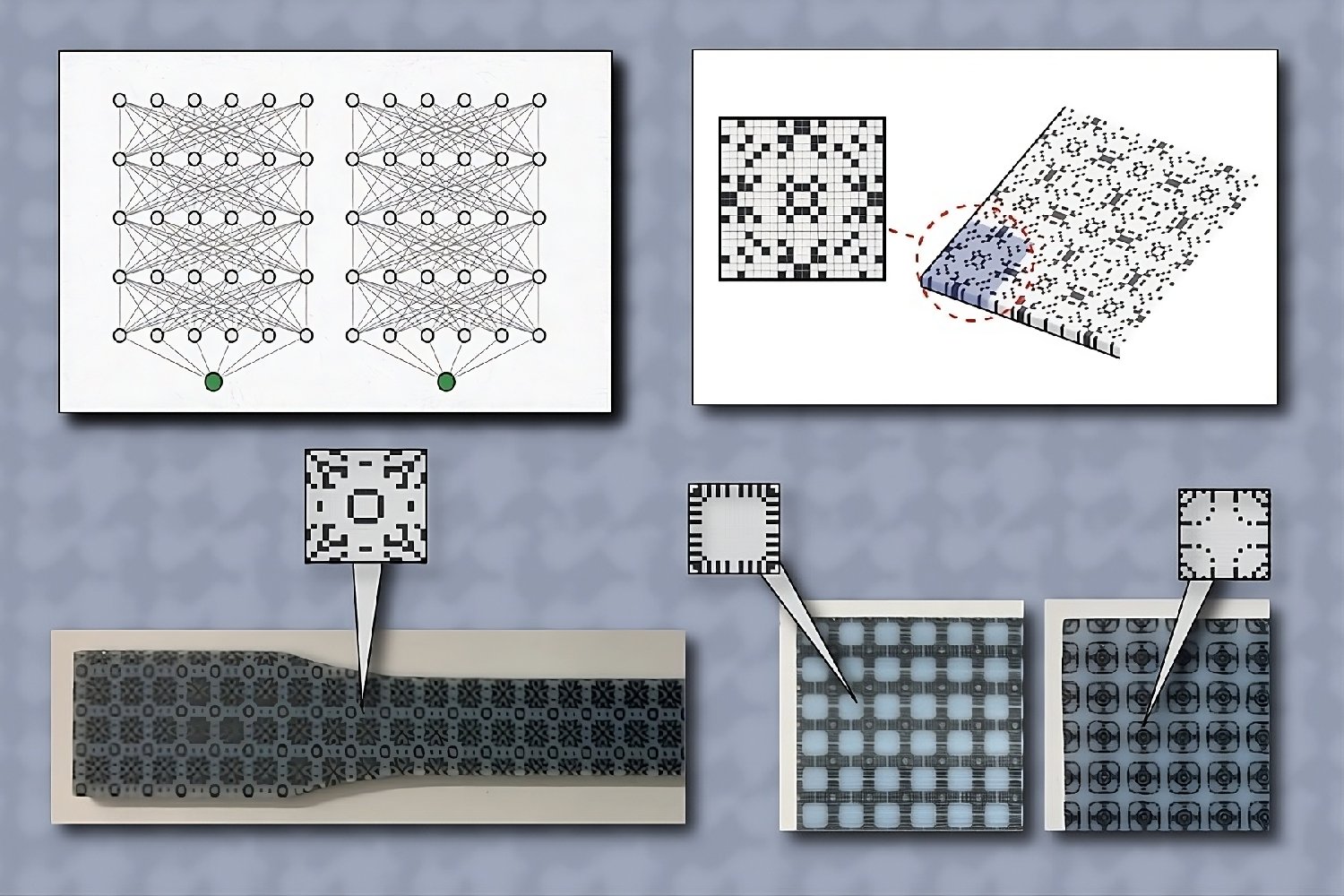Scientific visualization depicting the AI-guided assembly of a novel metal-organic framework with a high capacity for adsorbing carbon dioxide and synthesizable linkers. The left side illustrates the building blocks, predicted by generative AI, while the right side showcases the final AI-predicted structure. Credit: Xiaoli Yan/University of Illinois Chicago and ALCF Visualization & Data Analytics Team
Generative AI techniques, machine learning, and simulations offer researchers novel avenues to discover eco-friendly metal-organic framework materials crucial for carbon capture, a pivotal technology in mitigating greenhouse gas emissions from various industrial sources.
Metal-organic frameworks (MOFs) are being explored as a viable option for efficient carbon capture due to their porous nature that enables selective absorption of carbon dioxide. MOFs consist of three types of building blocks in their molecular structure: inorganic nodes, organic nodes, and organic linkers, which can be arranged in diverse configurations, presenting scientists with a vast design space to explore.
To expedite the discovery and design process, researchers from the U.S. Department of Energy’s Argonne National Laboratory are employing multiple strategies. These include leveraging generative artificial intelligence (AI) to propose novel building block candidates, utilizing machine learning, conducting high-throughput screening of materials, and employing theory-based simulations such as molecular dynamics.
Collaborating on this project are experts from the Beckman Institute for Advanced Science and Technology at the University of Illinois Urbana-Champaign (UIUC), the University of Illinois at Chicago, and the University of Chicago.
The traditional methods of MOF design have relied heavily on laborious experimental and computational efforts, which can be both expensive and time-consuming. By harnessing generative AI, the research team swiftly generated over 120,000 new MOF candidates within just 30 minutes, assembled block by block, using the Polaris supercomputer at the Argonne Leadership Computing Facility (ALCF).
Subsequently, the team employed the Delta supercomputer at UIUC to conduct intensive molecular dynamics simulations on the most promising candidates to evaluate their stability, chemical properties, and carbon capture capacity. This computational resource, a collaboration between Illinois and the National Center for Supercomputing Applications, played a crucial role in the screening process.
The innovative approach adopted by the team could streamline the synthesis of the most promising MOF candidates, offering a more efficient alternative to the conventional experimental and computational methods. With the upcoming deployment of the ALCF’s Aurora exascale supercomputer, researchers anticipate the ability to explore billions of MOF candidates simultaneously, including previously unexplored configurations.
Furthermore, the team is drawing inspiration from previous molecular design work to introduce novel combinations of building blocks within MOFs, enhancing their carbon capture capabilities. By incorporating insights from biophysics, physiology, and physical chemistry datasets, the team’s algorithm aims to refine MOFs for enhanced carbon capture efficiency.
This integrated workflow, encompassing generative AI, high-throughput screening, molecular dynamics, and Monte Carlo simulations, is poised to revolutionize MOF material design by leveraging past experimental and computational knowledge to accelerate the creation of innovative MOFs.
The meticulous atom-by-atom approach facilitated by AI in MOF design provides scientists with a broader perspective on porous structures, as highlighted by Argonne senior scientist and Data Science and Learning division director Ian Foster. The team is actively collaborating with autonomous labs to experimentally validate the feasibility of synthesizing AI-designed MOFs and their carbon capture capabilities, aiming to enhance the predictive accuracy of their models.
The study, authored by Hyun Park, Xiaoli Yan, Ruijie Zhu, Eliu Huerta, Santanu Chaudhuri, Donny Copper, Ian Foster, and Emad Tajkhorshid, was published in Communications Chemistry.
“This research underscores the immense potential of employing AI-based methodologies in molecular sciences,” noted UIUC’s Tajkhorshid, expressing the team’s ambition to extend this approach to diverse scientific challenges beyond MOF design.
The collaborative effort involving graduate students and early-career scientists from various institutions underscores the significance of cross-institutional partnerships in advancing AI-driven scientific endeavors. As the team continues to inspire and be inspired by emerging talents, the future appears promising for further innovations in the field.
More information:
Hyun Park et al, A generative artificial intelligence framework based on a molecular diffusion model for the design of metal-organic frameworks for carbon capture, Communications Chemistry (2024). DOI: 10.1038/s42004-023-01090-2
Provided by Argonne National Laboratory
Citation:
Scientists use AI to identify new materials for carbon capture (2024, February 14)
retrieved 14 February 2024 from https://phys.org/news/2024-02-scientists-ai-materials-carbon-capture.html










